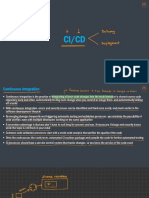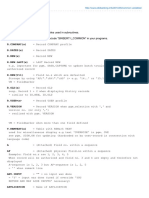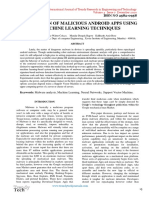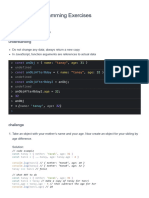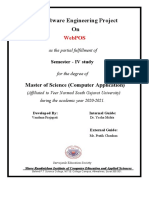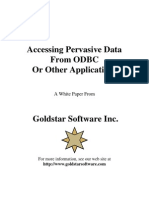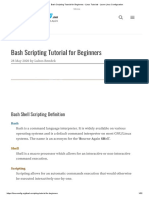0% found this document useful (0 votes)
47 views5 pagesCI - CD Pipeline Implementation For Web Applicationsp 2
The document outlines the objectives and scope of implementing a Continuous Integration (CI) and Continuous Deployment (CD) pipeline for web applications, aiming to enhance software delivery speed, code quality, and collaboration. It details components of the CI/CD pipeline, including version control, automated testing, and deployment environments, while also addressing security, compliance, and potential challenges. The implementation supports cloud platforms and emphasizes the use of Infrastructure as Code (IaC) for efficient resource management.
Uploaded by
venkatreddypdcCopyright
© © All Rights Reserved
We take content rights seriously. If you suspect this is your content, claim it here.
Available Formats
Download as DOCX, PDF, TXT or read online on Scribd
0% found this document useful (0 votes)
47 views5 pagesCI - CD Pipeline Implementation For Web Applicationsp 2
The document outlines the objectives and scope of implementing a Continuous Integration (CI) and Continuous Deployment (CD) pipeline for web applications, aiming to enhance software delivery speed, code quality, and collaboration. It details components of the CI/CD pipeline, including version control, automated testing, and deployment environments, while also addressing security, compliance, and potential challenges. The implementation supports cloud platforms and emphasizes the use of Infrastructure as Code (IaC) for efficient resource management.
Uploaded by
venkatreddypdcCopyright
© © All Rights Reserved
We take content rights seriously. If you suspect this is your content, claim it here.
Available Formats
Download as DOCX, PDF, TXT or read online on Scribd
/ 5














